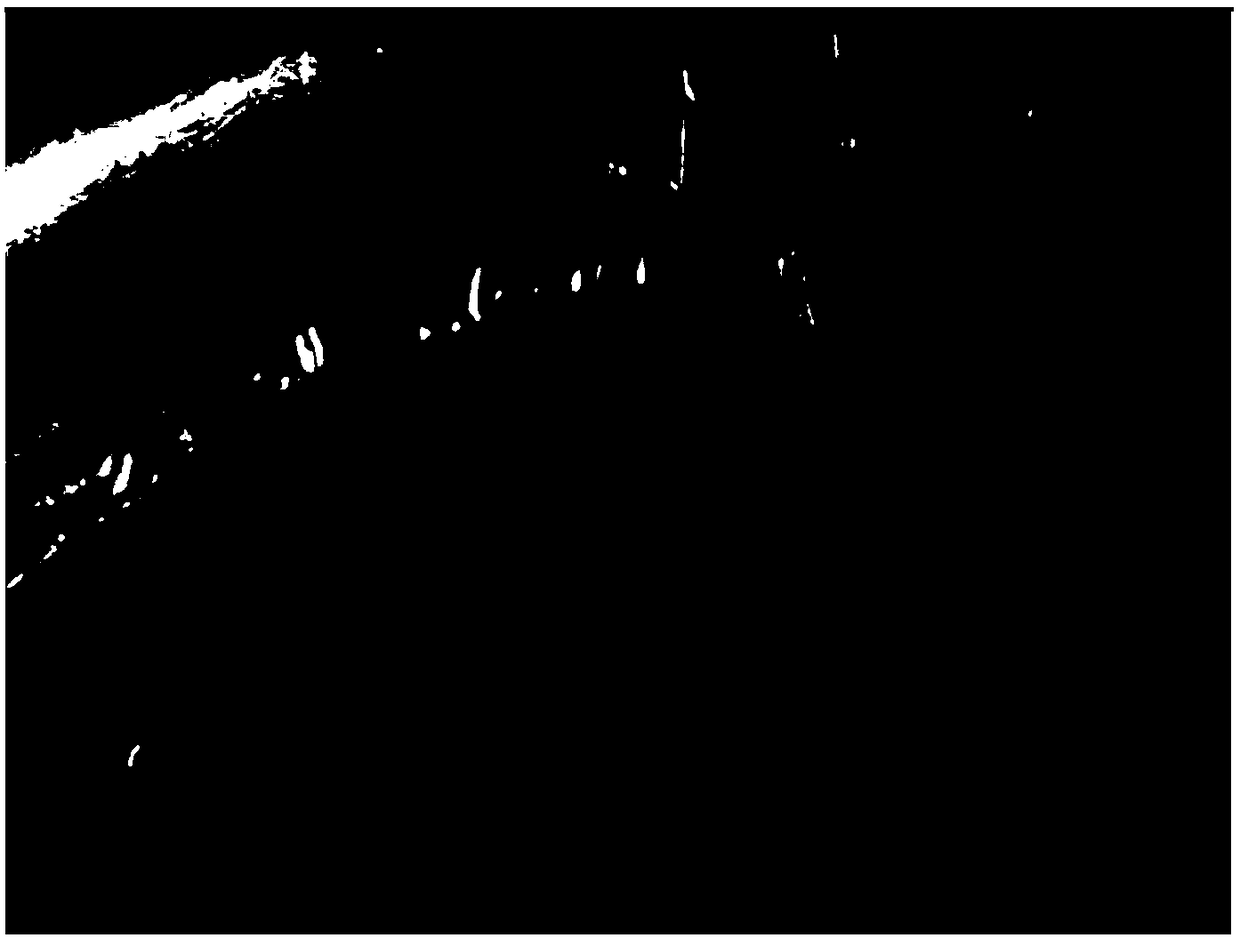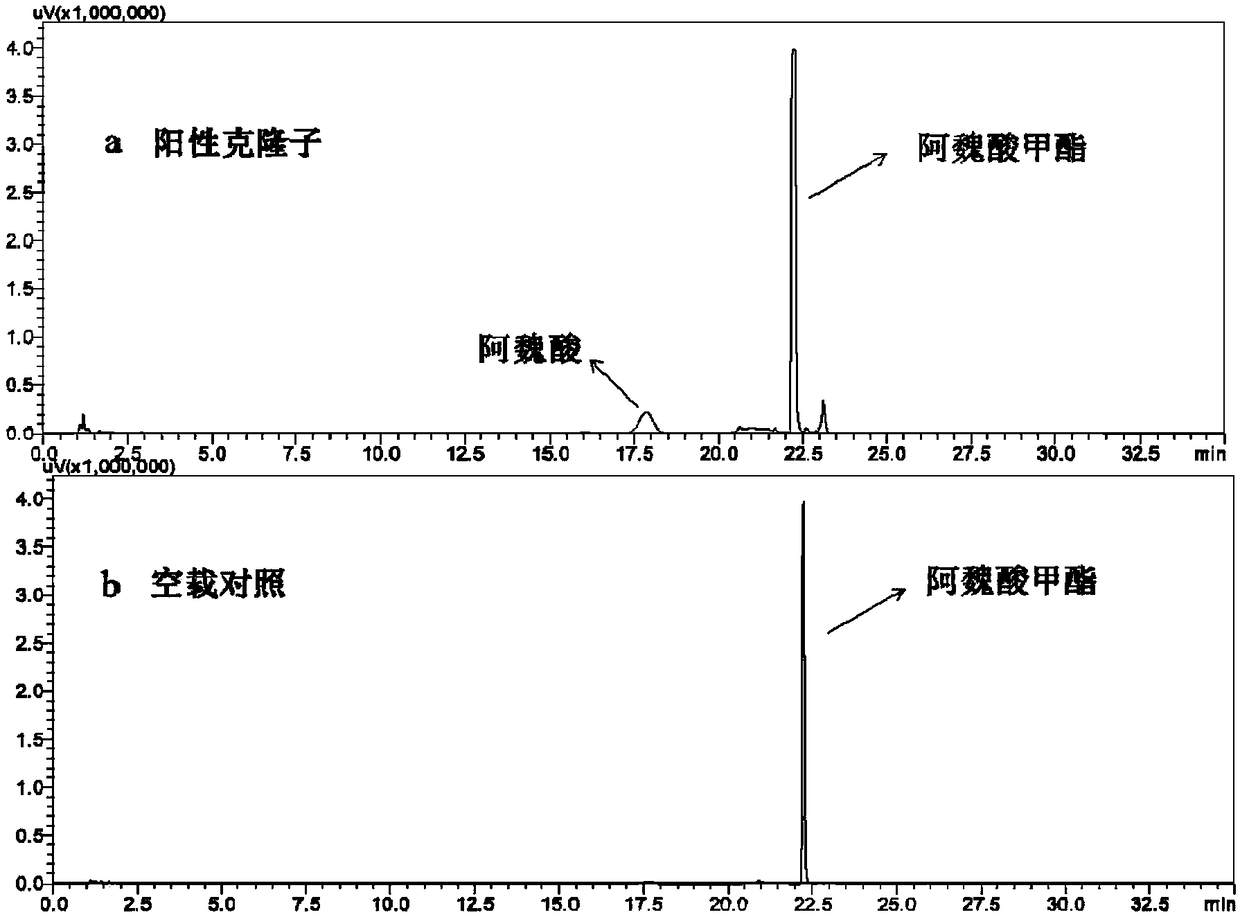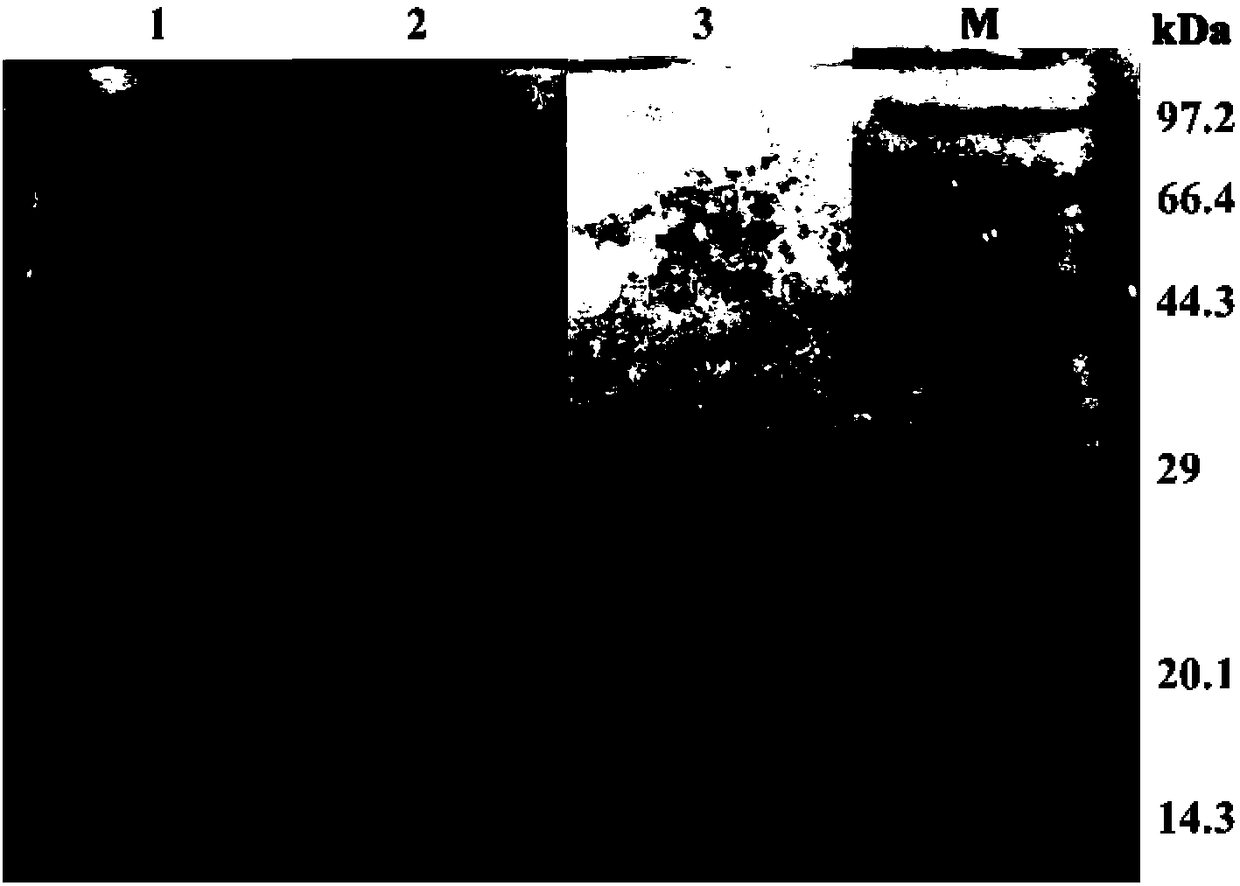Novel feruloyl esterase, coding gene and application thereof
A ferulic acid esterase and gene technology, applied in the application, genetic engineering, plant genetic improvement and other directions, can solve the problems of non-cultivation, limited application, limited development and utilization of new ferulic acid esterase, etc., to achieve easy digestion and absorption , high enzyme activity, the effect of improving feed utilization
- Summary
- Abstract
- Description
- Claims
- Application Information
AI Technical Summary
Problems solved by technology
Method used
Image
Examples
Embodiment 1
[0051] Example 1: Screening of ferulic acid esterase gene in soil metagenomic library
[0052] 1. Primary screening by plate method
[0053] Prepare FAE screening medium, add 1.5% (v / v) methyl ferulate (dissolved in dimethylformamide, 10% w / v) in LB liquid medium, after high temperature and high pressure sterilization, in suitable temperature (50-60°C), add ampicillin with a final concentration of 100mg / L, shake vigorously to make the methyl ferulate evenly distributed, and immediately pour the plate on the ultra-clean bench. Spread the cosmid library bacterial solution on each screening plate, culture at 37°C for 1-2 days, and observe the formation of transparent circles around the colonies ( figure 1 ).
[0054] 2. Double screening
[0055] After primary screening, the clones were inoculated in LB liquid medium, cultured overnight at 37°C, and centrifuged at 12,000g for 8 minutes to collect the bacteria. The cells were washed three times with sterile water and resuspend...
Embodiment 2
[0060] Embodiment 2: Cloning of ferulic acid esterase gene
[0061] 1. PCR amplification
[0062] Using primer fae-f(5'-CATG CCATGG GCATGCGTGCAGGGGGGAG-3') and fae-r(5'-CCC AAGCTT CCGGCCGCTCAGCCAGT-3') amplifies the ferulic acid esterase gene fae-xuan, and the underlines of the upstream and downstream primers represent the enzyme cleavage sites of NcoI and HindIII respectively. PCR reaction system (25 μL): ultrapure water 9.5 μL, Mix 12.5 μL, upstream and downstream primers 1 μL, positive subcloning plasmid DNA 1 μL. PCR reaction conditions: 94°C for 4min; 35 cycles of 94°C for 30s, 60°C for 45s, 72°C for 1min; 72°C for 10min. The PCR product was electrophoresed and recovered by tapping the gel to obtain a purified PCR product. 2. Digestion
[0063] The purified and recovered PCR product was subjected to double enzyme digestion for 3 hours. The digestion system is: NcoI 5 μL, HindIII 5 μL, 10×K Buffer 10 μL, 0.1% BSA 10 μL, PCR product 5 μg, sterile water to 100 μL. Th...
Embodiment 3
[0069] Example 3: Heterologous expression and purification of ferulic acid esterase FAE-Xuan
[0070] 1. Conversion
[0071] Take 10 μL of the pET28a-fae-xuan plasmid obtained in Example 2 and add it to 100 μL of Escherichia coli BL21 (DE3) competent cells, incubate on ice for 30 minutes, heat shock in a water bath at 42°C for 90 seconds, and add 900 μL of LB liquid culture after 2 minutes of ice bathing Base, 150rpm, shake at 37°C for 45min. The culture was centrifuged at 2500 g for 5 min, and 600 μL of the supernatant was removed. The bacteria were resuspended with the remaining culture medium and spread on an LB plate containing kanamycin. After culturing overnight at 37°C, a single colony was picked. Escherichia coli BL21(DE3) containing pET28a-fae-xuan was thus obtained.
[0072] 2. Express
[0073] The recombinant bacteria were inoculated into 5 mL LB liquid medium containing kanamycin, and cultured at 37° C. and 180 rpm for 12 hours. Inoculate 1.5mL of bacterial liq...
PUM
 Login to View More
Login to View More Abstract
Description
Claims
Application Information
 Login to View More
Login to View More - R&D
- Intellectual Property
- Life Sciences
- Materials
- Tech Scout
- Unparalleled Data Quality
- Higher Quality Content
- 60% Fewer Hallucinations
Browse by: Latest US Patents, China's latest patents, Technical Efficacy Thesaurus, Application Domain, Technology Topic, Popular Technical Reports.
© 2025 PatSnap. All rights reserved.Legal|Privacy policy|Modern Slavery Act Transparency Statement|Sitemap|About US| Contact US: help@patsnap.com



